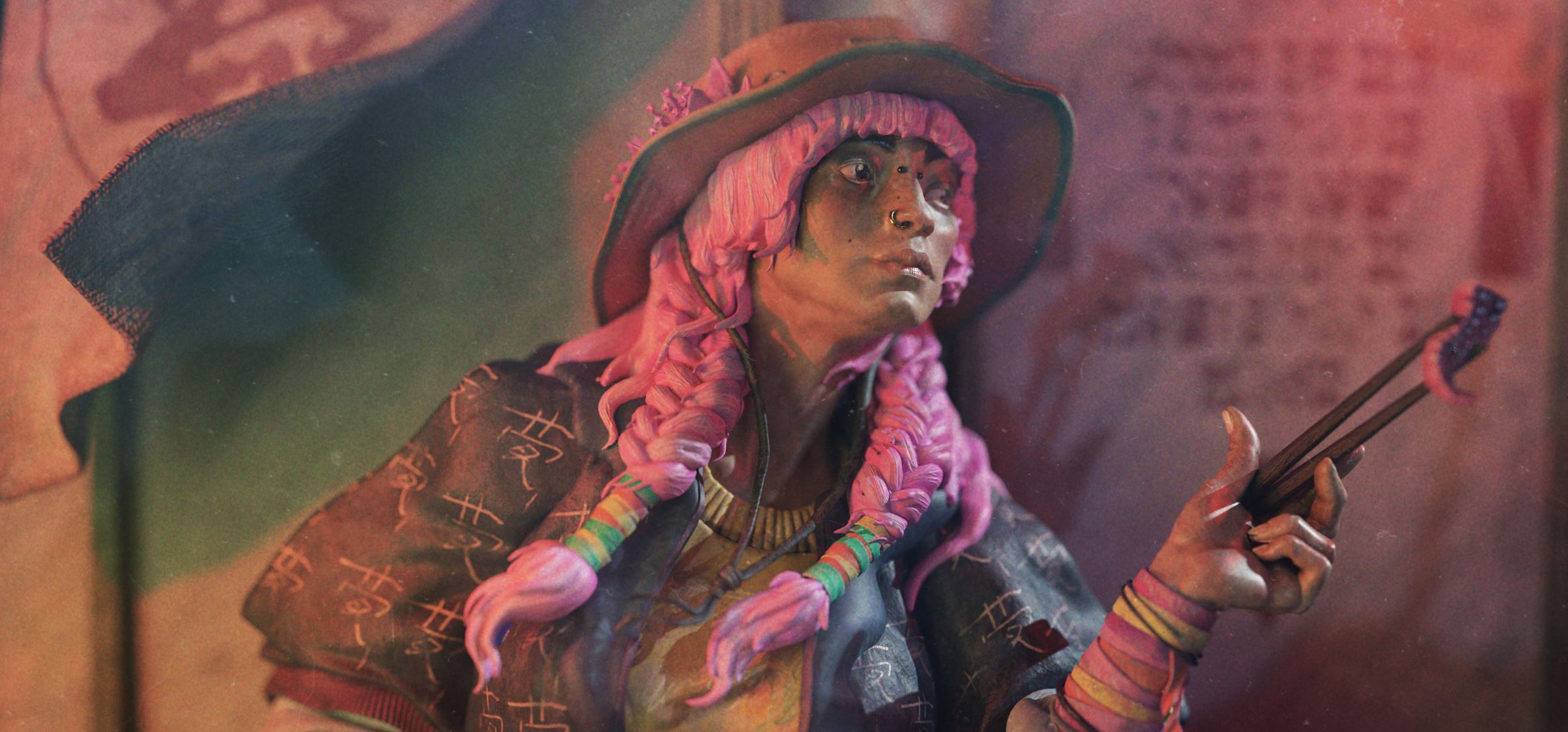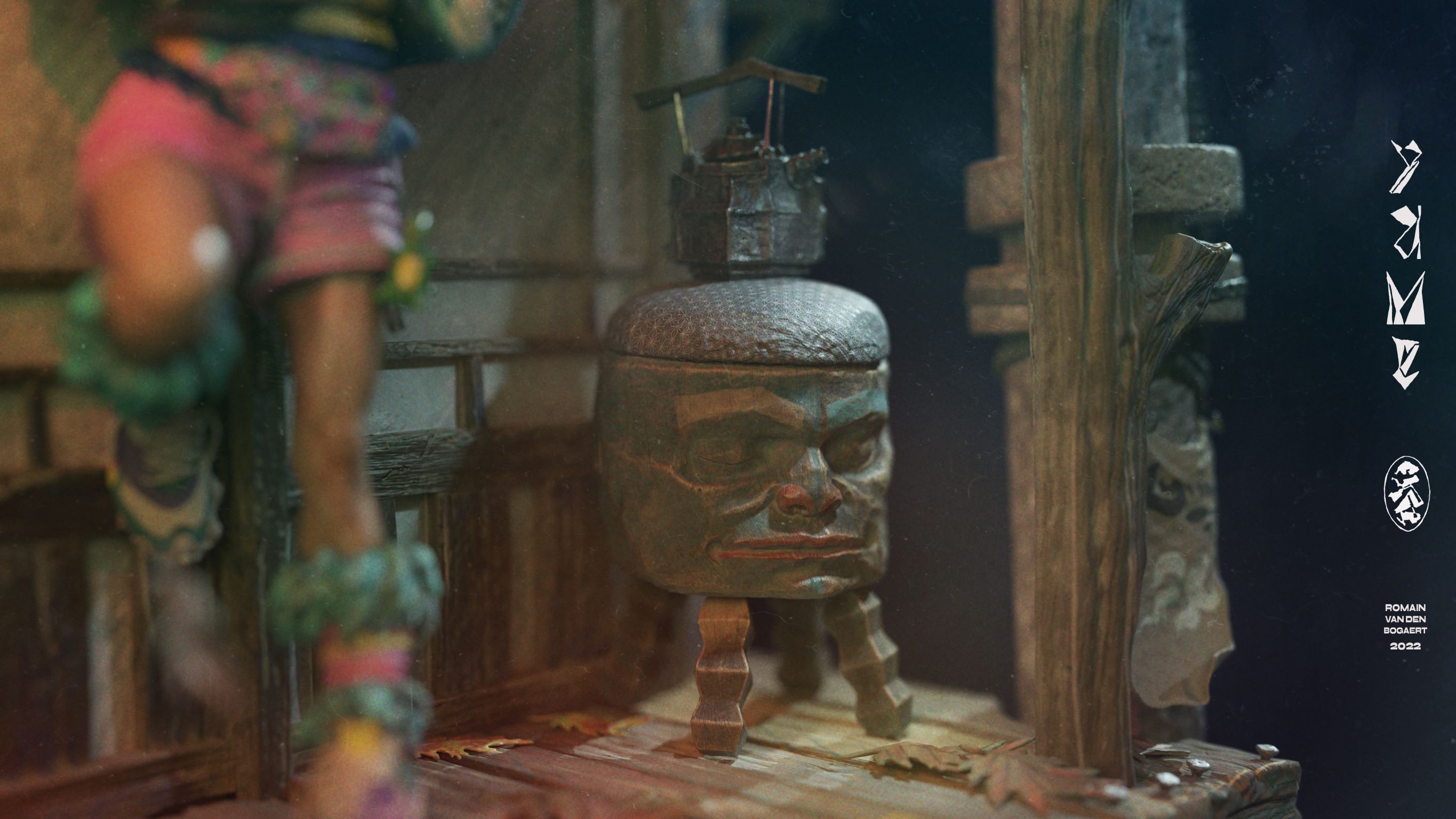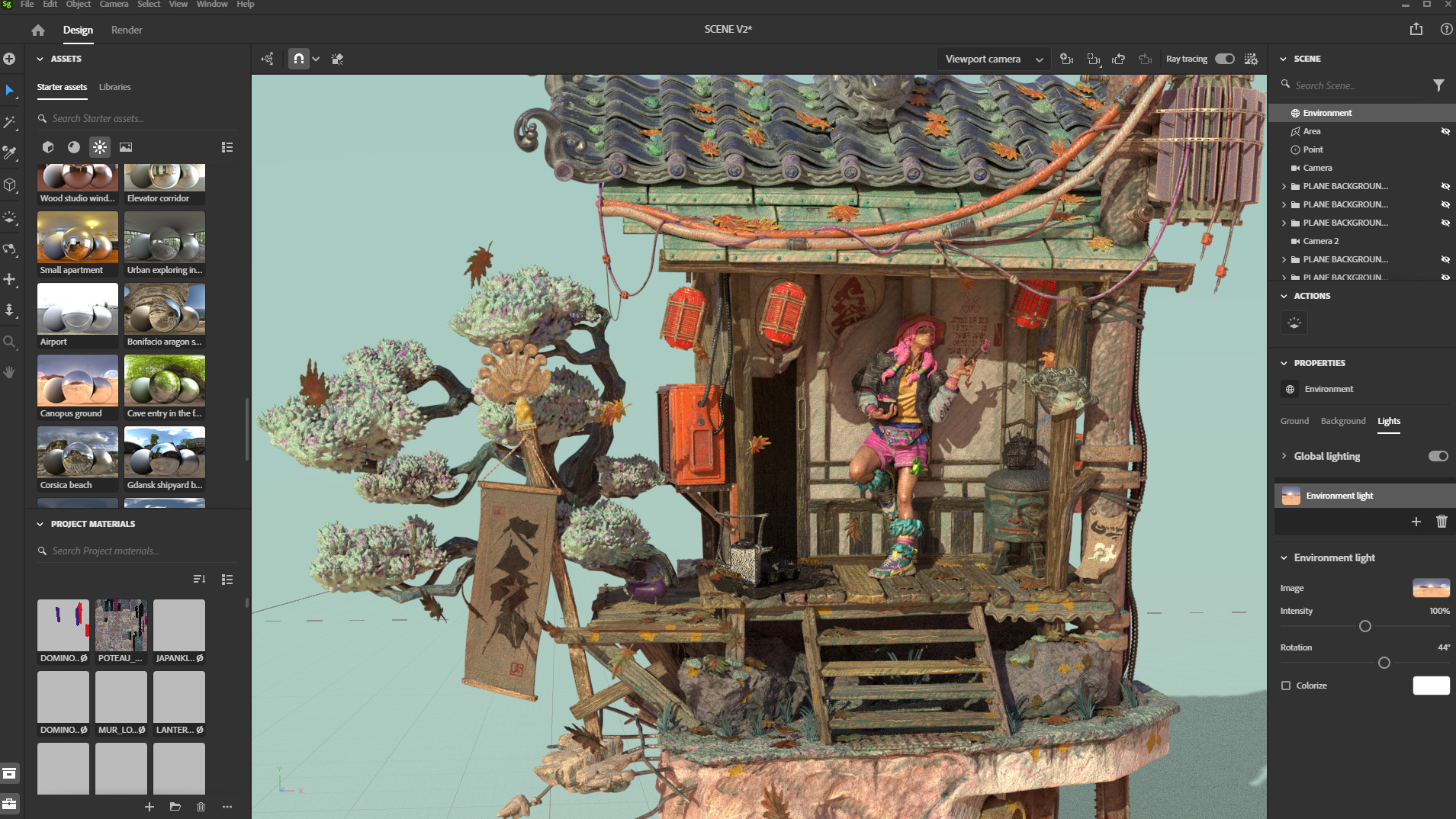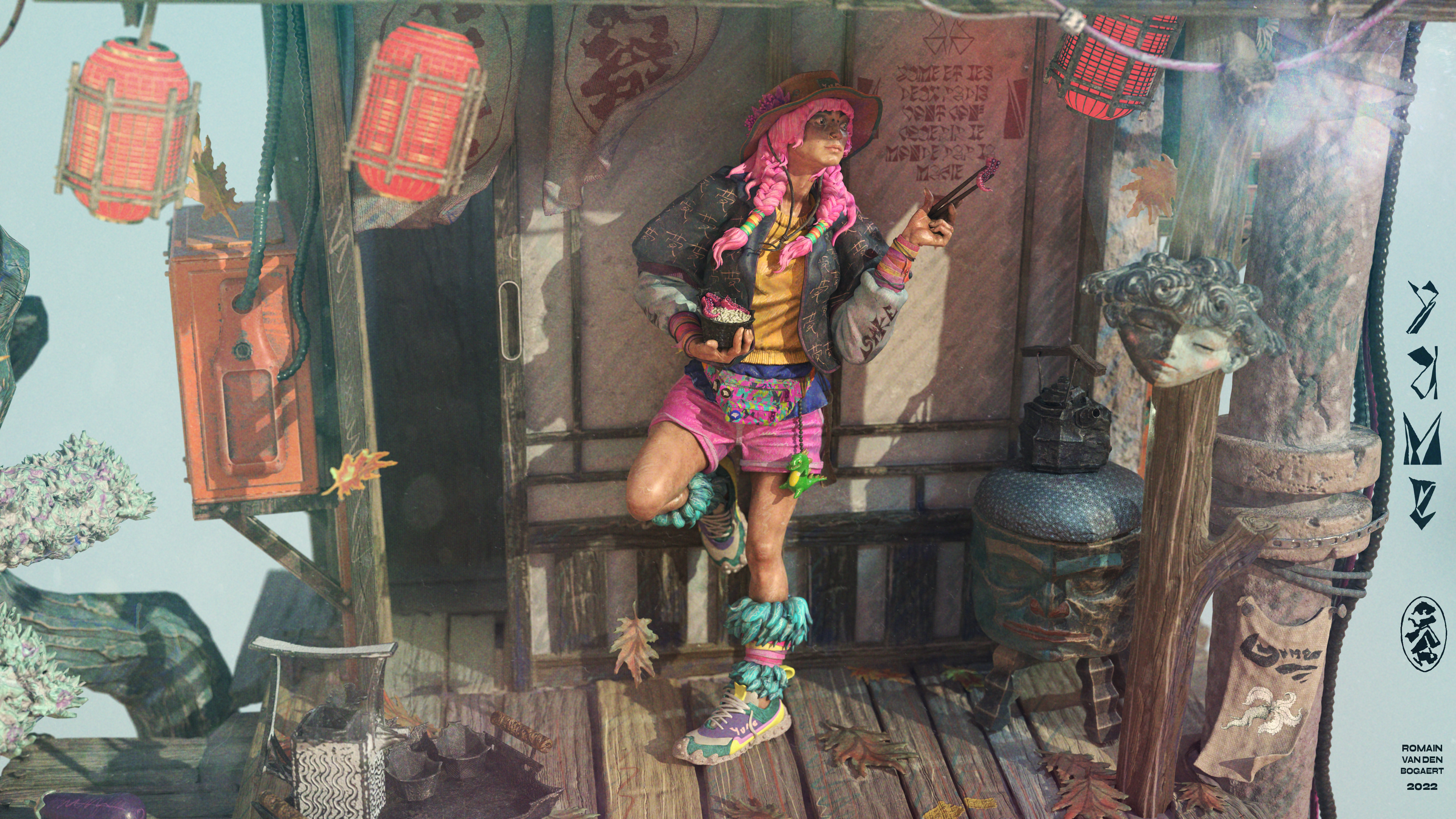
As 3D tools become more powerful and easier to work with, the benefits of their use are being felt in an ever-wider range of creative fields. Notably, it’s increasingly easy to use 3D tools to create work with a hand-made, artisanal quality. Aspects like this have drawn traditional artists such as sculptor Romain Van den Bogaert to learn the Substance 3D toolset and use it to move seamlessly between digital art and real-world creation.
In the short film series above, Izakaya’s Paradigm, film-maker Gaël Astruc visits Romain in his woodland workshop to explore how he interweaves his conventional approach of clay sculpture and wood carving with digital art created with 3D tools.
Part of Romain’s work is to create fantasy figurines for various clients, and he explains that one of his reasons for initially learning the Substance 3D toolset was that this industry is moving in this direction. Many of his clients are now using 3D and he didn’t want to be left behind.
There was, he says, a learning curve that took some commitment to overcome, but now he is confident with the tools, the benefits are more than worth it.
One of the most fascinating aspects of watching Romain work is seeing how he uses VR, photogrammetry scanning and 3D printing to dissolve the barriers between the real world and the virtual world - something that’s important to an artist who is used to dealing with tangible materials.
Combining the digital and the physical

First we see him using the sculpting tool Substance 3D Modeler with a VR headset and controllers. This enables him to handle his sculpts in a way that accurately reproduces the intuitive movements of real-life sculpting. Modeler makes it possible to sculpt both in VR and using a classic desktop setup; from time to time, Romain will switch between the two.
Next, he has a sculpted wooden stool and a small clay face that he wants to incorporate into his 3D digital artwork, so he scans them both using photogrammetry and places them into his scene, adjusting the textures to make them fit within the setting.

Later in the video, he sculpts an abstract, whimsical teapot in Modeler, and likes his wacky creation so much that he decides to make a physical version. He 3D prints a small model, and uses that as a guide to make a life-sized ceramic pot, ready to fire in his kiln.
It’s this blending of an original design that took shape inside a digital sculpting tool with Romain’s skill as a ceramicist that demonstrates how learning this toolset can open up brand new creative possibilities.
“I’ll be able to drink my tea from it soon!” he says.
Throughout the video series we see this interplay and exchange between the physical and virtual realms, and how smoothly he transitions between real-world and digital mediums.
Romain tells us that one of the things he loves about Substance 3D Modeler is how it allows him to try out ideas quickly for physical projects. He explains: “Sculpting a 200-kilogram block of wood is doable, but it’s not something you can do ten times a day. If I want to iterate on a sculpture, I can create a small clay model, scan it, copy it several times with variations – and then, when I’m happy with it, I can print it out and use it as a guide for, say, a 200-kilogram wooden piece, or something big and ambitious in ceramic.”
Substance 3D Painter
To showcase what’s possible with Substance 3D, Romain has created a scene from scratch showing a character eating a rice bowl outside of a restaurant. He modeled much of this directly in 3D using Substance 3D Modeler, adding in several elements – such as the figure’s face, and the wooden stool – that he sculpted in clay, scanned, and imported into Modeler
Once his scene has been assembled in Modeler, he exports it to Substance 3D Painter to carry out the texturing work that will bring it to life. Whatever style of texturing you’re aiming for – whether photorealistic, stylised, or something else entirely – Painter is the ideal tool.

Romain begins by superimposing a series of layers that mimic the process of creating a patina with traditional materials by laying down washes of paint and brushing for texture. One strength of the Substance 3D ecosystem is the ability to sample real textures – so you can take a piece of wood with peeling paint, or some old wallpaper, and Substance 3D Sampler will make this into a 3D material that can be applied as needed. Or you can simply browse the Substance 3D Assets library to find a customisable material that meets your needs.
Moreover, any such materials are parametric – that is, you can modify a material’s characteristic so that it precisely meets your needs. If you’ve created a 3D material from your old wallpaper but you want to, say, change the colour of that wallpaper, that’s totally doable.
As Romain progresses with his scene, we see him applying an almost 2D graphical style to his models, producing a painterly feel for the final result. He explains that he likes to hand paint some of the scene’s details, so that he’s combining rendered lighting with his own brushstrokes. “I put in little highlights that will be on the texture, that won’t be generated by the renderer - this will create a ‘hand-made’ style,” he says.
Finishing touches

For the final compositing phase, Romain turns to Substance 3D Stager. “It is the digital equivalent of a real-world photo studio,” Romain explains. “So I can control many parameters such as cameras, angles of view, depth of field, type of lens and lighting.”
He decides on a desaturated lighting concept with pastel tones, and uses depth of field to highlight the character by slightly blurring the background. There’s no limit on the number of cameras and angles of view, so he’s able to experiment until he finds the perfect angle and lighting for his final renders.
The result of Romain’s hard work is an atmospheric, stylised 3D scene that combines handpainted textures with digital lighting - part of the character’s face looks like a watercolour painting, but accessories such as her nose ring look photoreal.
Romain’s case is just one instance of how creatives in a wide range of fields are exploring the advantages of bringing 3D tools into their workflow. The Substance 3D tools are more powerful and easier to use than ever; professional creatives are discovering how these tools can facilitate iteration of ideas, say, or allow rapid creation of variations of a product – or, as in Romain’s case, the merging of physical and digital artistic expression.
The Substance 3D suite provides everything you need to model, texture, and render 3D assets and scenes. Take a look now for more information.







